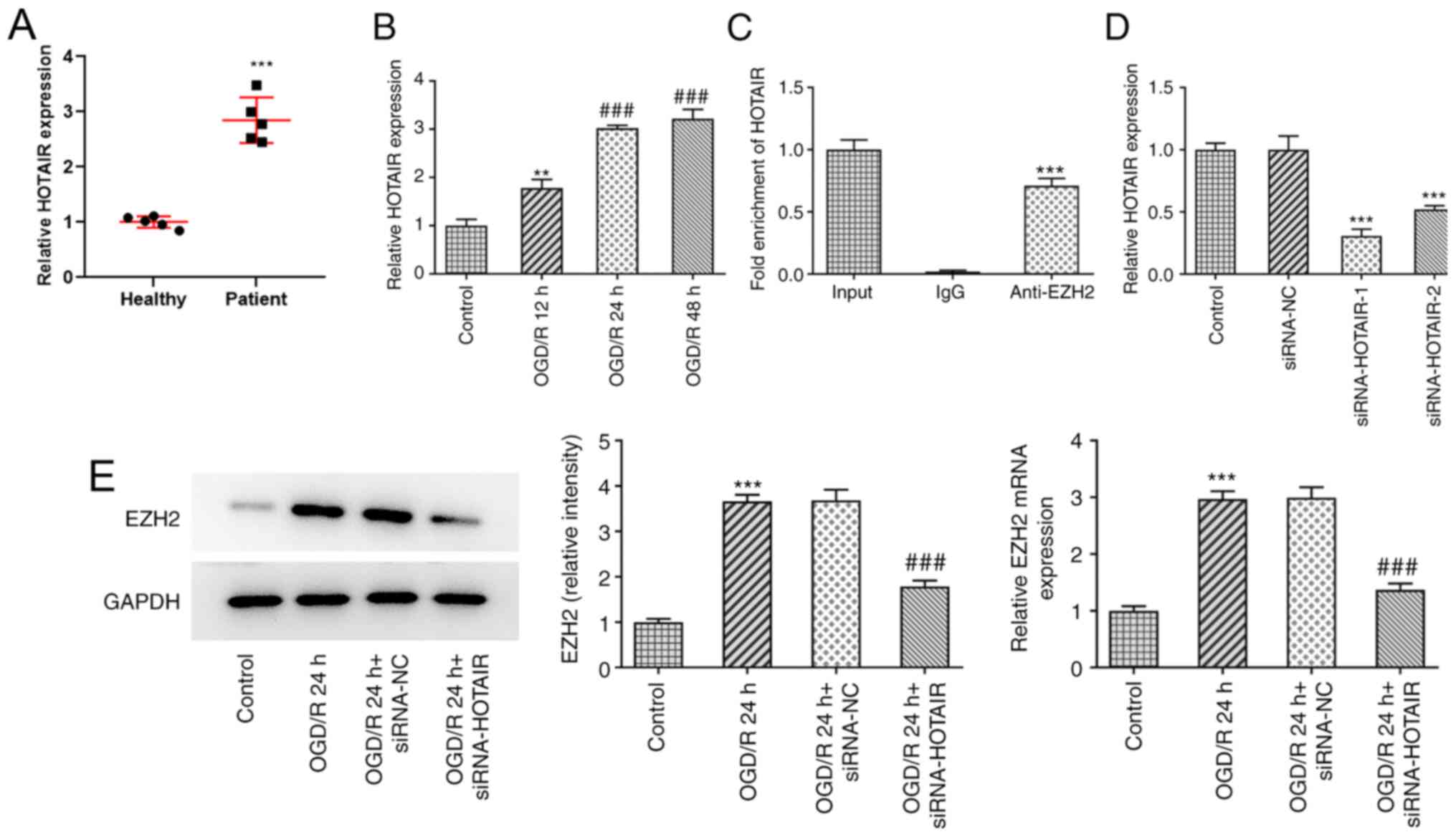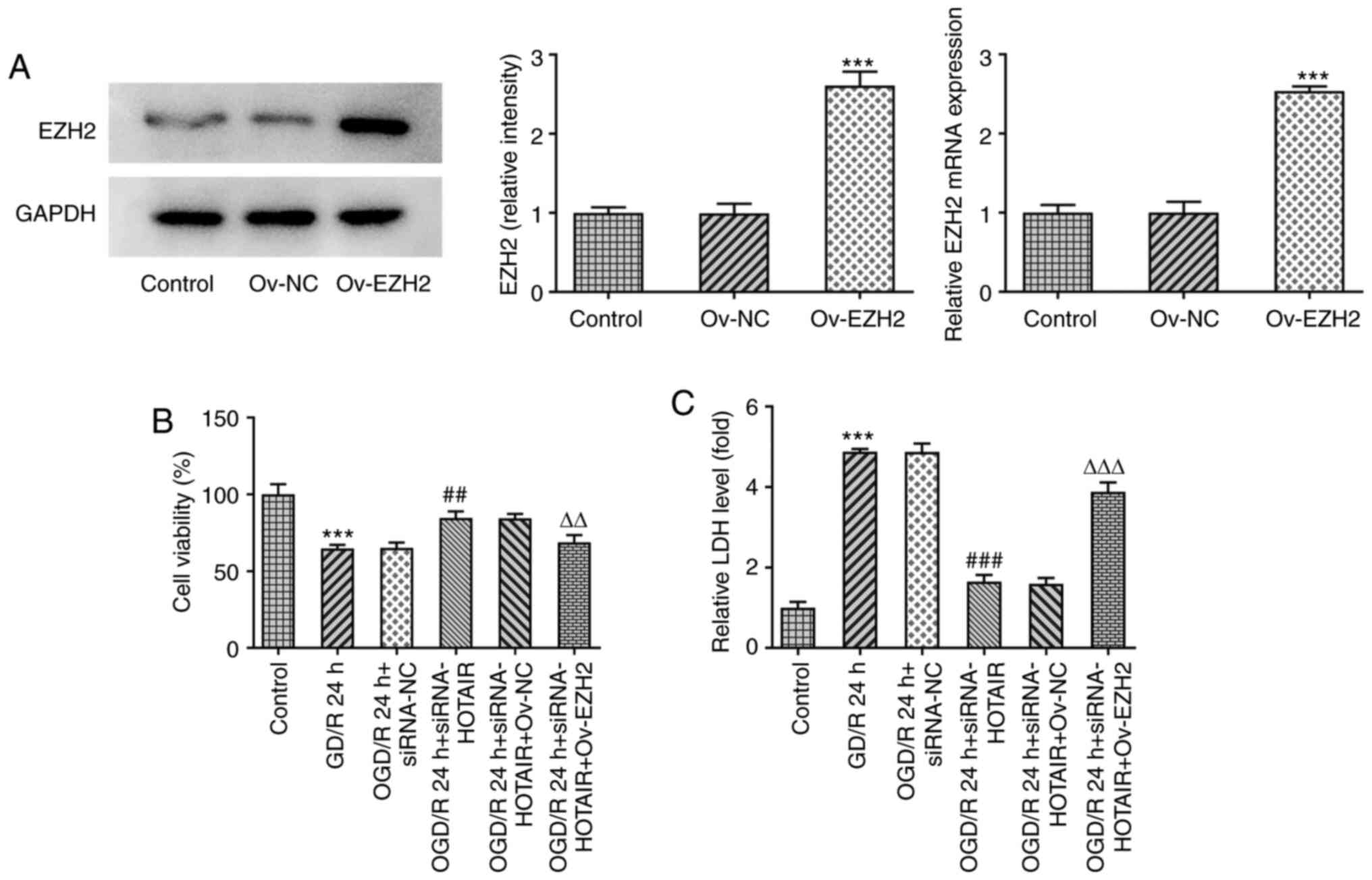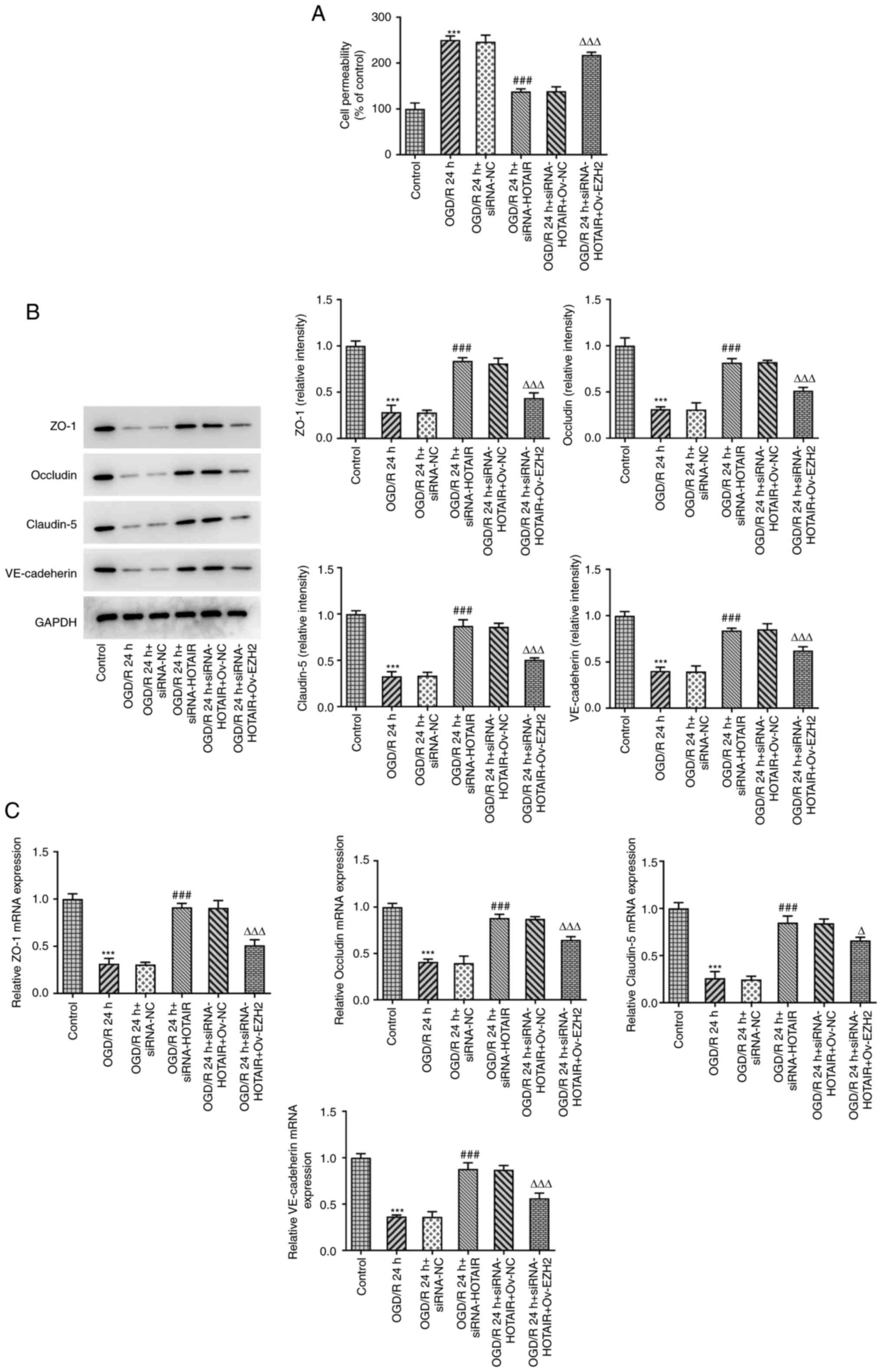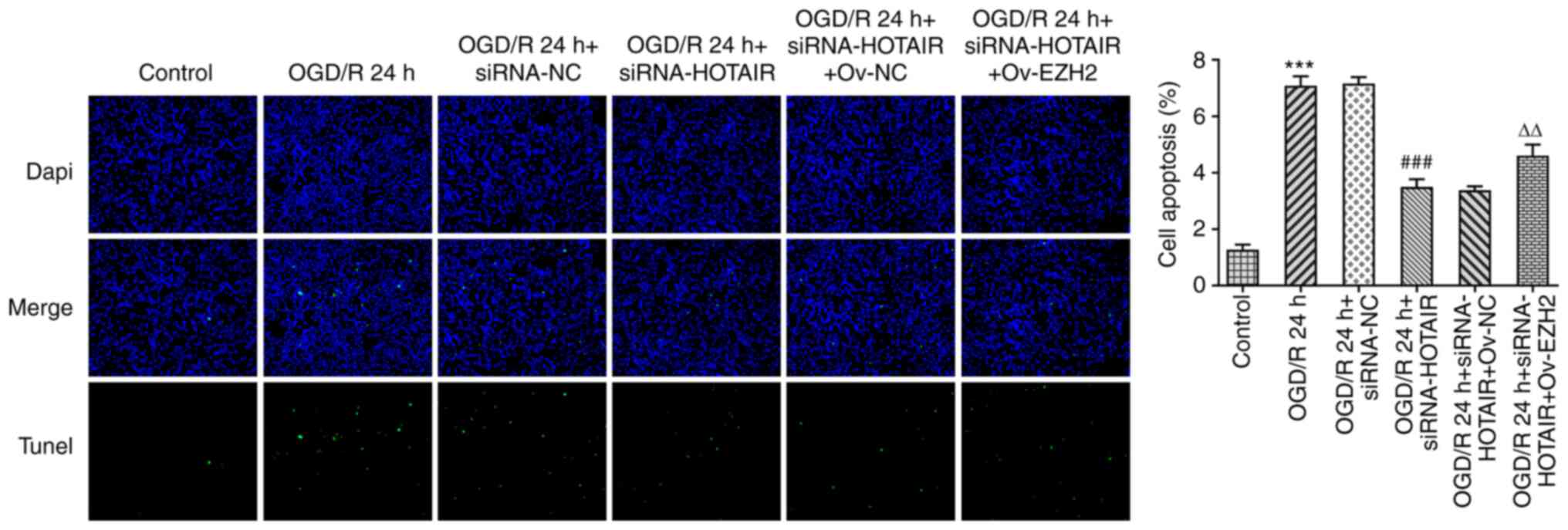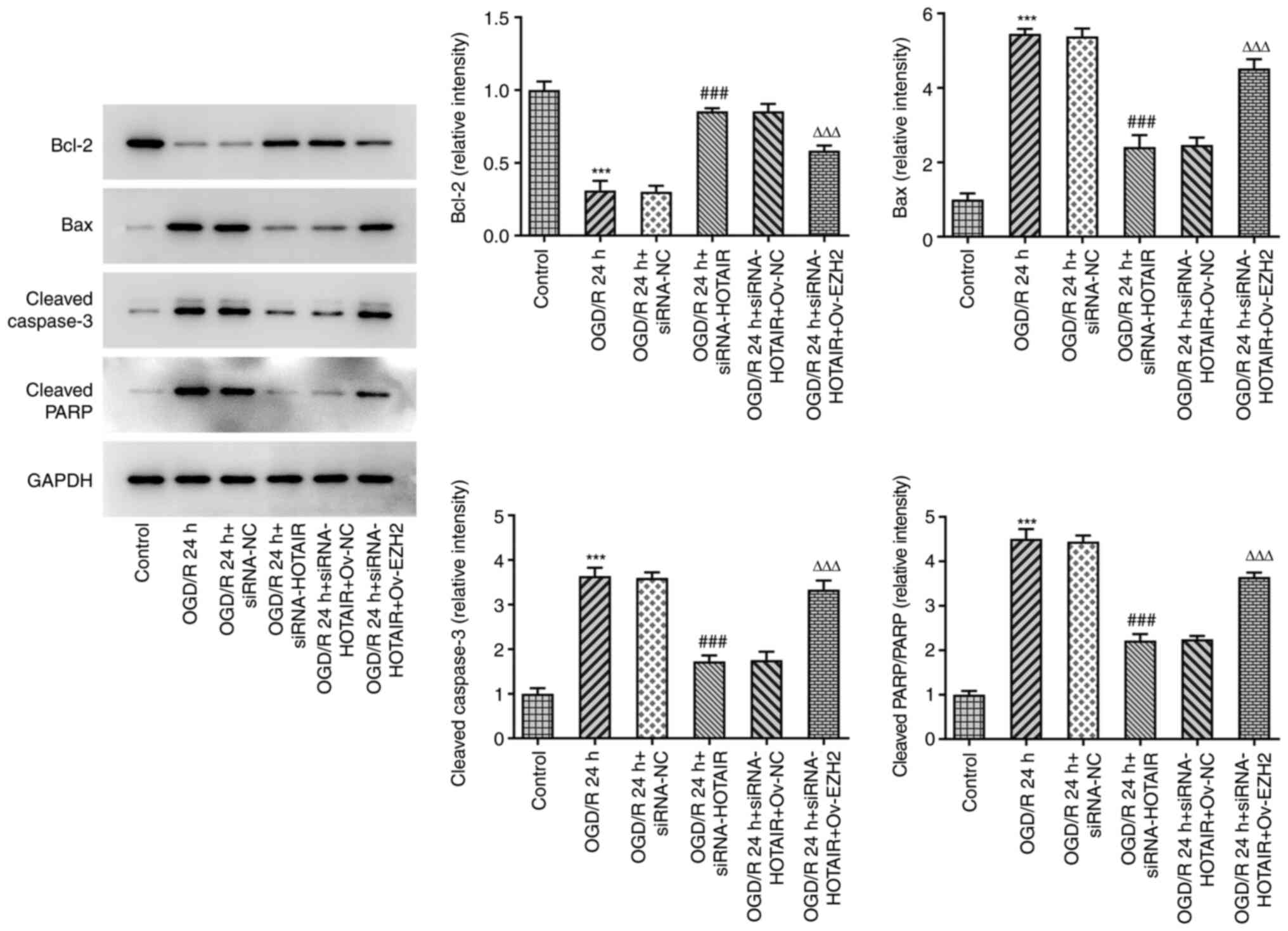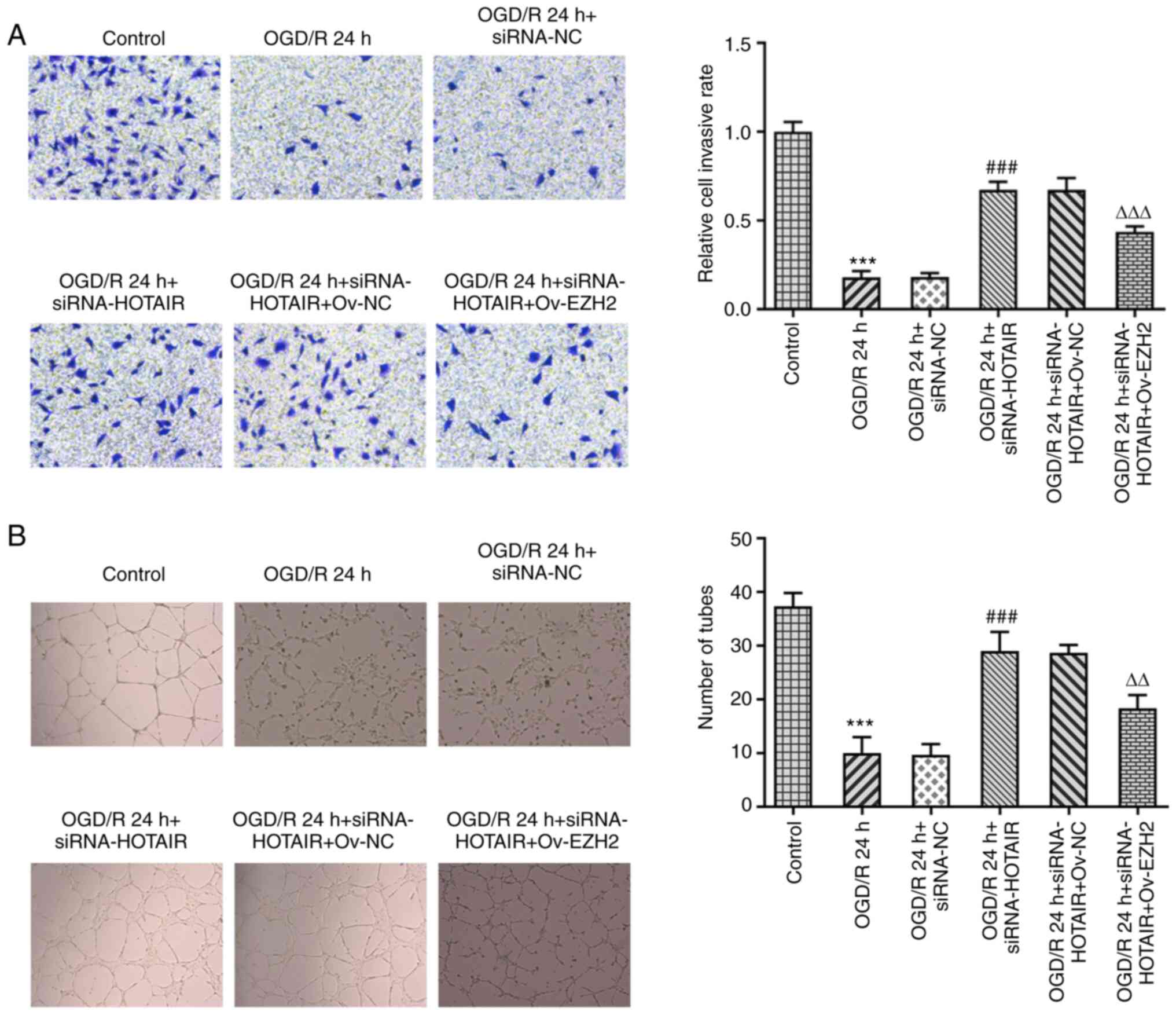|
1
|
Dumbuya JS, Chen L, Wu JY and Wang B: The
role of G-CSF neuroprotective effects in neonatal hypoxic-ischemic
encephalopathy (HIE): Current status. J Neuroinflammation.
18(55)2021.PubMed/NCBI View Article : Google Scholar
|
|
2
|
Ohshima M, Tsuji M, Taguchi A, Kasahara Y
and Ikeda T: Cerebral blood flow during reperfusion predicts later
brain damage in a mouse and a rat model of neonatal
hypoxic-ischemic encephalopathy. Exp Neurol. 233:481–489.
2012.PubMed/NCBI View Article : Google Scholar
|
|
3
|
Lv H, Wang Q, Wu S, Yang L, Ren P, Yang Y,
Gao J and Li L: Neonatal hypoxic ischemic encephalopathy-related
biomarkers in serum and cerebrospinal fluid. Clin Chim Acta.
450:282–297. 2015.PubMed/NCBI View Article : Google Scholar
|
|
4
|
Hua C, Ju WN, Jin H, Sun X and Zhao G:
Molecular chaperones and hypoxic-ischemic encephalopathy. Neural
Regen Res. 12:153–160. 2017.PubMed/NCBI View Article : Google Scholar
|
|
5
|
Dong MX, Hu QC, Shen P, Pan JX, Wei YD,
Liu YY, Ren YF, Liang ZH, Wang HY, Zhao LB and Xie P: Recombinant
tissue plasminogen activator induces neurological side effects
independent on thrombolysis in mechanical animal models of focal
cerebral infarction: A systematic review and meta-analysis. PLoS
One. 11(e0158848)2016.PubMed/NCBI View Article : Google Scholar
|
|
6
|
Arba F, Leigh R, Inzitari D, Warach SJ,
Luby M and Lees KR: STIR/VISTA Imaging Collaboration. Blood-brain
barrier leakage increases with small vessel disease in acute
ischemic stroke. Neurology. 89:2143–2150. 2017.PubMed/NCBI View Article : Google Scholar
|
|
7
|
Graves SI and Baker DJ: Implicating
endothelial cell senescence to dysfunction in the ageing and
diseased brain. Basic Clin Pharmacol Toxicol. 127:102–110.
2020.PubMed/NCBI View Article : Google Scholar
|
|
8
|
Doll DN, Hu H, Sun J, Lewis SE, Simpkins
JW and Ren X: Mitochondrial crisis in cerebrovascular endothelial
cells opens the blood-brain barrier. Stroke. 46:1681–1689.
2015.PubMed/NCBI View Article : Google Scholar
|
|
9
|
Tarafdar A and Pula G: The role of NADPH
oxidases and oxidative stress in neurodegenerative disorders. Int J
Mol Sci. 19(3824)2018.PubMed/NCBI View Article : Google Scholar
|
|
10
|
Liu C, Yang J, Zhang C, Liu M, Geng X, Ji
X, Du H and Zhao H: Analysis of long non-coding RNA expression
profiles following focal cerebral ischemia in mice. Neurosci Lett.
665:123–129. 2018.PubMed/NCBI View Article : Google Scholar
|
|
11
|
Soudyab M, Iranpour M and Ghafouri-Fard S:
The role of long non-coding RNAs in breast cancer. Arch Iran Med.
19:508–517. 2016.PubMed/NCBI
|
|
12
|
Huang T, Zhao HY, Zhang XB, Gao XL, Peng
WP, Zhou Y, Zhao WH and Yang HF: LncRNA ANRIL regulates cell
proliferation and migration via sponging miR-339-5p and regulating
FRS2 expression in atherosclerosis. Eur Rev Med Pharmacol Sci.
24:1956–1969. 2020.PubMed/NCBI View Article : Google Scholar
|
|
13
|
Zhang W, Chen Y, Liu P, Chen J, Song L,
Tang Y, Wang Y, Liu J, Hu FB and Hui R: Variants on chromosome
9p21.3 correlated with ANRIL expression contribute to stroke risk
and recurrence in a large prospective stroke population. Stroke.
43:14–21. 2012.PubMed/NCBI View Article : Google Scholar
|
|
14
|
Jiang B, Tang Y, Wang H, Chen C, Yu W, Sun
H, Duan M, Lin X and Liang P: Down-regulation of long non-coding
RNA HOTAIR promotes angiogenesis via regulating miR-126/SCEL
pathways in burn wound healing. Cell Death Dis.
11(61)2020.PubMed/NCBI View Article : Google Scholar
|
|
15
|
Jin D, Wei W, Song C, Han P and Leng X:
Knockdown EZH2 attenuates cerebral ischemia-reperfusion injury via
regulating microRNA-30d-3p methylation and USP22. Brain Res Bull.
169:25–34. 2021.PubMed/NCBI View Article : Google Scholar
|
|
16
|
Chen J, Zhang M, Zhang X, Fan L, Liu P, Yu
L, Cao X, Qiu S and Xu Y: EZH2 inhibitor DZNep modulates microglial
activation and protects against ischaemic brain injury after
experimental stroke. Eur J Pharmacol. 857(172452)2019.PubMed/NCBI View Article : Google Scholar
|
|
17
|
Luo Y, Fang Y, Kang R, Lenahan C, Gamdzyk
M, Zhang Z, Okada T, Tang J, Chen S and Zhang JH: Inhibition of
EZH2 (enhancer of zeste homolog 2) attenuates neuroinflammation via
H3k27me3/SOCS3/TRAF6/NF-κB (trimethylation of histone 3 lysine
27/suppressor of cytokine signaling 3/tumor necrosis factor
receptor family 6/nuclear factor-κB) in a rat model of subarachnoid
hemorrhage. Stroke. 51:3320–3331. 2020.PubMed/NCBI View Article : Google Scholar
|
|
18
|
Yu YL, Chou RH, Shyu WC, Hsieh SC, Wu CS,
Chiang SY, Chang WJ, Chen JN, Tseng YJ, Lin YH, et al:
Smurf2-mediated degradation of EZH2 enhances neuron differentiation
and improves functional recovery after ischaemic stroke. EMBO Mol
Med. 5:531–547. 2013.PubMed/NCBI View Article : Google Scholar
|
|
19
|
Xue H, Xu Y, Wang S, Wu ZY, Li XY, Zhang
YH, Niu JY, Gao QS and Zhao P: Sevoflurane post-conditioning
alleviates neonatal rat hypoxic-ischemic cerebral injury via
Ezh2-regulated autophagy. Drug Des Devel Ther. 13:1691–1706.
2019.PubMed/NCBI View Article : Google Scholar
|
|
20
|
Li Z, Hou P, Fan D, Dong M, Ma M, Li H,
Yao R, Li Y, Wang G, Geng P, et al: The degradation of EZH2
mediated by lncRNA ANCR attenuated the invasion and metastasis of
breast cancer. Cell Death Differ. 24:59–71. 2017.PubMed/NCBI View Article : Google Scholar
|
|
21
|
Xue W, Wang F, Han P, Liu Y, Zhang B, Gu
X, Wang Y, Li M, Zhao Y and Cui B: The oncogenic role of lncRNA
FAM83C-AS1 in colorectal cancer development by epigenetically
inhibits SEMA3F via stabilizing EZH2. Aging (Albany NY).
12:20396–20412. 2020.PubMed/NCBI View Article : Google Scholar
|
|
22
|
You BH, Yoon JH, Kang H, Lee EK, Lee SK
and Nam JW: HERES, a lncRNA that regulates canonical and
noncanonical Wnt signaling pathways via interaction with EZH2. Proc
Natl Acad Sci USA. 116:24620–24629. 2019.PubMed/NCBI View Article : Google Scholar
|
|
23
|
Papazian O: Neonatal hypoxic-ischemic
encephalopathy. Medicina (B Aires). 78 (Suppl 2):36–41.
2018.PubMed/NCBI(In Spanish).
|
|
24
|
Livak KJ and Schmittgen TD: Analysis of
relative gene expression data using real-time quantitative PCR and
the 2(-Delta Delta C(T)) method. Methods. 25:402–408.
2001.PubMed/NCBI View Article : Google Scholar
|
|
25
|
Ing NH, Berghman L, Abi-Ghanem D, Abbas K,
Kaushik A, Riggs PK and Puschett JB: Marinobufagenin regulates
permeability and gene expression of brain endothelial cells. Am J
Physiol Regul Integr Comp Physiol. 306:R918–R924. 2014.PubMed/NCBI View Article : Google Scholar
|
|
26
|
Qian L, Fei Q, Zhang H, Qiu M, Zhang B,
Wang Q, Yu Y, Guo C, Ren Y, Mei M, et al: lncRNA HOTAIR promotes
DNA repair and radioresistance of breast cancer via EZH2. DNA Cell
Biol: Nov 2, 2020 (Epub ahead of print).
|
|
27
|
Zhao YH, Liu YL, Fei KL and Li P: Long
non-coding RNA HOTAIR modulates the progression of preeclampsia
through inhibiting miR-106 in an EZH2-dependent manner. Life Sci.
253(117668)2020.PubMed/NCBI View Article : Google Scholar
|
|
28
|
Bernardo-Castro S, Sousa JA, Brás A,
Cecília C, Rodrigues B, Almendra L, Machado C, Santo G, Silva F,
Ferreira L, et al: Pathophysiology of blood-brain barrier
permeability throughout the different stages of ischemic stroke and
its implication on hemorrhagic transformation and recovery. Front
Neurol. 11(594672)2020.PubMed/NCBI View Article : Google Scholar
|
|
29
|
Nakamura S, Koyano K, Jinnai W, Hamano S,
Yasuda S, Konishi Y, Kuboi T, Kanenishi K, Nishida T and Kusaka T:
Simultaneous measurement of cerebral hemoglobin oxygen saturation
and blood volume in asphyxiated neonates by near-infrared
time-resolved spectroscopy. Brain Dev. 37:925–932. 2015.PubMed/NCBI View Article : Google Scholar
|
|
30
|
Park WS, Sung SI, Ahn SY, Yoo HS, Sung DK,
Im GH, Choi SJ and Chang YS: Hypothermia augments neuroprotective
activity of mesenchymal stem cells for neonatal hypoxic-ischemic
encephalopathy. PLoS One. 10(e0120893)2015.PubMed/NCBI View Article : Google Scholar
|
|
31
|
Khan RH, Islam MS, Haque SA, Hossain MA,
Islam MN, Khaleque MA, Chowdhury B and Chowdhury MA: Correlation
between grades of intraventricular hemorrhage and severity of
hypoxic ischemic encephalopathy in perinatal asphyxia. Mymensingh
Med J. 23:7–12. 2014.PubMed/NCBI
|
|
32
|
Catanese L, Tarsia J and Fisher M: Acute
ischemic stroke therapy overview. Circ Res. 120:541–558.
2017.PubMed/NCBI View Article : Google Scholar
|
|
33
|
Méresse S, Dehouck MP, Delorme P, Bensaïd
M, Tauber JP, Delbart C, Fruchart JC and Cecchelli R: Bovine brain
endothelial cells express tight junctions and monoamine oxidase
activity in long-term culture. J Neurochem. 53:1363–1371.
1989.PubMed/NCBI View Article : Google Scholar
|
|
34
|
Uwamori H, Ono Y, Yamashita T, Arai K and
Sudo R: Comparison of organ-specific endothelial cells in terms of
microvascular formation and endothelial barrier functions.
Microvasc Res. 122:60–70. 2019.PubMed/NCBI View Article : Google Scholar
|
|
35
|
Liu Z, Liu Y, Zhu Y and Gong J:
HOTAIR/miRNA-1/Cx43: A potential mechanism for treating myocardial
ischemia-reperfusion injury. Int J Cardiol. 308(11)2020.PubMed/NCBI View Article : Google Scholar
|
|
36
|
Ma NH, Zhang MH, Yang JX, Sun ZJ, Yuan F
and Qiu XL: Long noncoding RNA HOTAIR sponging miR-211 regulates
cerebral ischemia-reperfusion injury. J Biol Regul Homeost Agents.
34:2209–2214. 2020.PubMed/NCBI View Article : Google Scholar
|
|
37
|
Meng K, Jiao J, Zhu RR, Wang BY, Mao XB,
Zhong YC, Zhu ZF, Yu KW, Ding Y, Xu WB, et al: The long noncoding
RNA hotair regulates oxidative stress and cardiac myocyte apoptosis
during ischemia-reperfusion injury. Oxid Med Cell Longev.
2020(1645249)2020.PubMed/NCBI View Article : Google Scholar
|
|
38
|
Sun Y and Hu ZQ: LncRNA HOTAIR aggravates
myocardial ischemia-reperfusion injury by sponging microRNA-126 to
upregulate SRSF1. Eur Rev Med Pharmacol Sci. 24:9046–9054.
2020.PubMed/NCBI View Article : Google Scholar
|
|
39
|
Tang B, Bao N, He G and Wang J: Long
noncoding RNA HOTAIR regulates autophagy via the miR-20b-5p/ATG7
axis in hepatic ischemia/reperfusion injury. Gene. 686:56–62.
2019.PubMed/NCBI View Article : Google Scholar
|
|
40
|
Wang Y, Xie Y, Li L, He Y, Zheng D, Yu P,
Yu L, Tang L, Wang Y and Wang Z: EZH2 RIP-seq identifies
tissue-specific long non-coding RNAs. Curr Gene Ther. 18:275–285.
2018.PubMed/NCBI View Article : Google Scholar
|
|
41
|
Fang J, Zheng W, Hu P and Wu J:
Investigating the effect of lncRNA HOTAIR on apoptosis induced by
myocardial ischemia-reperfusion injury. Mol Med Rep.
23(169)2021.PubMed/NCBI View Article : Google Scholar
|
|
42
|
Jiao H, Wang Z, Liu Y, Wang P and Xue Y:
Specific role of tight junction proteins claudin-5, occludin, and
ZO-1 of the blood-brain barrier in a focal cerebral ischemic
insult. J Mol Neurosci. 44:130–139. 2011.PubMed/NCBI View Article : Google Scholar
|
|
43
|
Reinhold AK and Rittner HL: Barrier
function in the peripheral and central nervous system-a review.
Pflugers Arch. 469:123–134. 2017.PubMed/NCBI View Article : Google Scholar
|
|
44
|
Lampugnani MG, Dejana E and Giampietro C:
Vascular endothelial (VE)-cadherin, endothelial adherens junctions,
and vascular disease. Cold Spring Harb Perspect Biol.
10(a029322)2018.PubMed/NCBI View Article : Google Scholar
|
|
45
|
Giannotta M, Trani M and Dejana E:
VE-cadherin and endothelial adherens junctions: Active guardians of
vascular integrity. Dev Cell. 26:441–454. 2013.PubMed/NCBI View Article : Google Scholar
|















